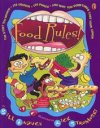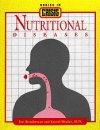Building a Food Pyramid Additional Information
Sohn, Emily. 2004. Strong bones for life. Science News for Kids (Feb. 4). Available at http://www.sciencenewsforkids.org/articles/20040204/Feature1.asp.
______. 2003. In search of the perfect french fry. Science News for Kids (July 27).
Available at http://www.sciencenewsforkids.org/articles/20030723/Feature1.asp.
You can learn more about the Food Guide Pyramid at www.usda.gov/cnpp/pyramid.html (U.S. Department of Agriculture) and kidshealth.org/kid/stay_healthy/food/pyramid.html (KidsHealth for Kids).
Information for middle school kids about food and nutrition can be found at www.fns.usda.gov/tn/Students/index.htm (U.S. Department of Agriculture).
Books recommended by SearchIt!Science:
 |
Food Rules— Bill Haduch
Published by Puffin Books/Penguin Putnam, 2001.
Why do you eat? What happens to food after you swallow it? How do you eliminate it? Over-stuffed with amusing facts and interesting trivia, this book really is food for thought! Did you know that the world’s favorite snack food is popcorn? Or, did you know that every year, you eat about 170 grocery bags of food? Find out about gross, smelly foods. Learn how food advertisements can trick you, and how to read nutritional labels. There are even recipes to get you started, including one for “Cockroaches Trapped in a Rain Gutter.” |
 |
Eat Smart: A Guide to Good Health For Kids — Dale Figtree
Published by New Wind Publishing, 1992.
James loves junk food. Before he knows it, he’s put on weight. Then his mother introduces him to Joanna, a nutritional counselor, and he learns just how good healthy food can be. He adds exercise to his routine and gets his eating—and weight—under control. Cartoon drawings illustrate James’s introduction to good eating habits. A question-and-answer section and several vegetarian recipes are also included. |
 |
Nutritional Diseases— Jon Zonderman
Published by Twenty-First Century Books/Millbrook Press, 1993.
What does eating have to do with diseases? Plenty! Eating too much food can cause a person to be overweight. But some people who worry too much about being thin have an eating disorder known as anorexia nervosa. Others have allergies to certain foods and become ill when they eat them. Information about digestive problems, such as ulcers or colitis, is presented, and malnutrition is described. Using color photographs and drawings, this book looks at diseases that are connected with nutrition and the way we eat. |
Power Words
diabetes A disease in which a person has too much sugar in the blood. In diabetes, the body does not produce enough of a hormone called insulin, which helps the body take up sugar from the blood. If not treated, diabetes can cause damage to nerves and blood vessels.
nutrition The process by which a living thing takes in food and makes use of nutrients.
protein A molecule that is made up of long chains of chemical compounds called amino acids. Living cells are made up largely of proteins. Proteins are an important part of the diet of many animals and are found in foods like meat, cheese, and beans.
Copyright © 2002, 2003 Houghton-Mifflin Company. All rights reserved. Used with permission.
